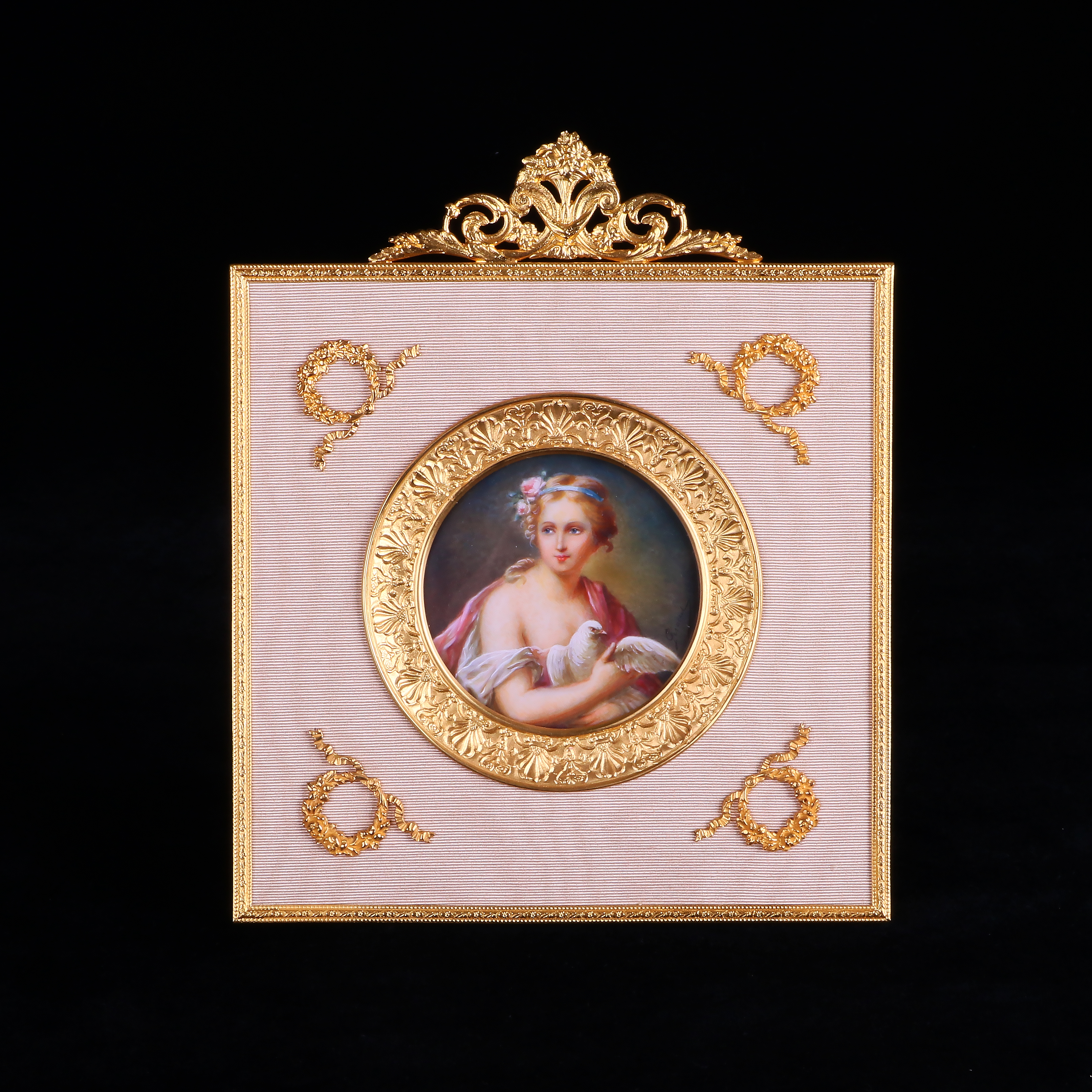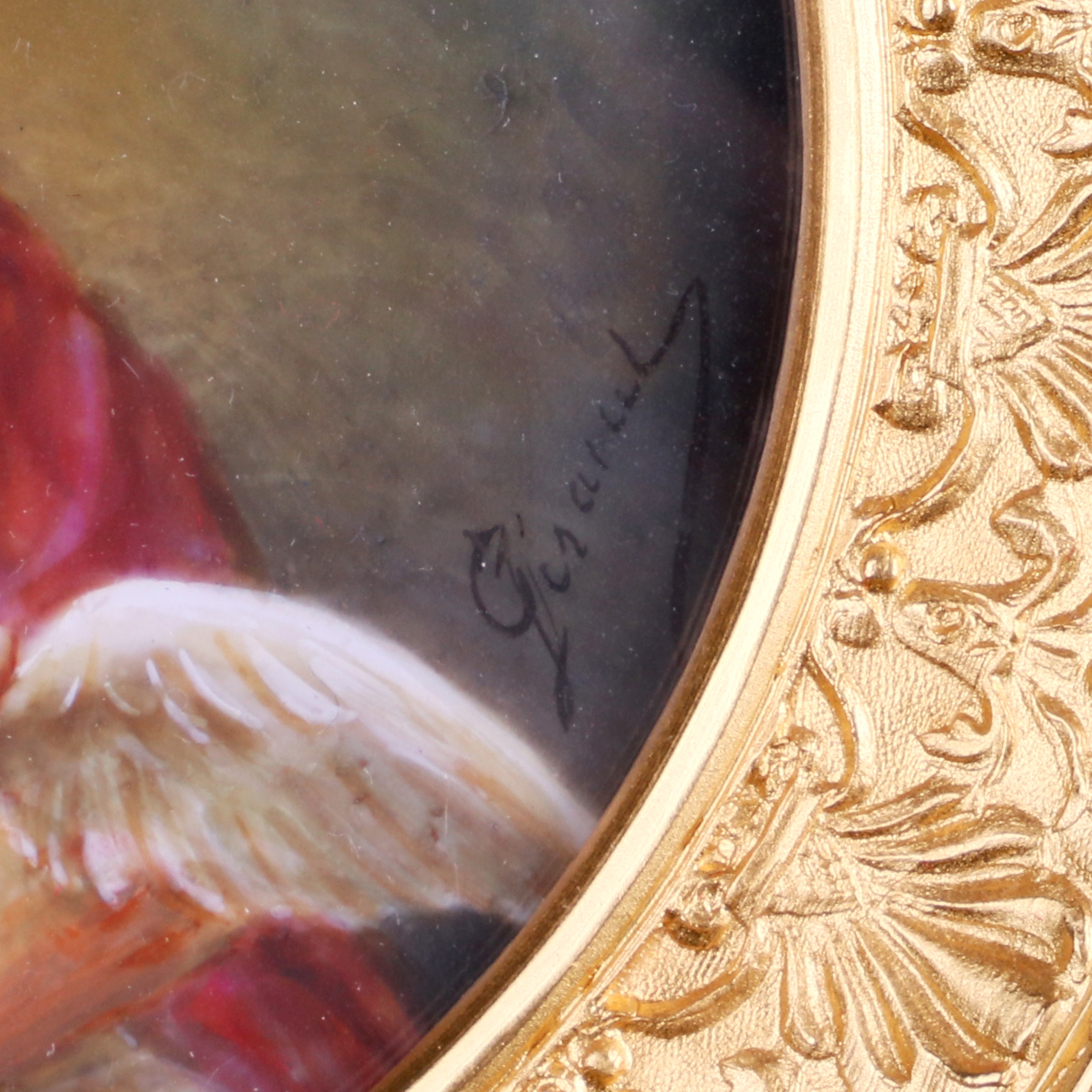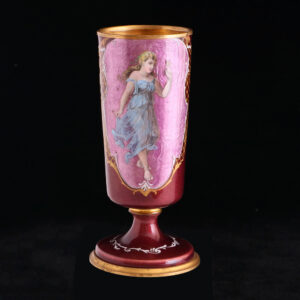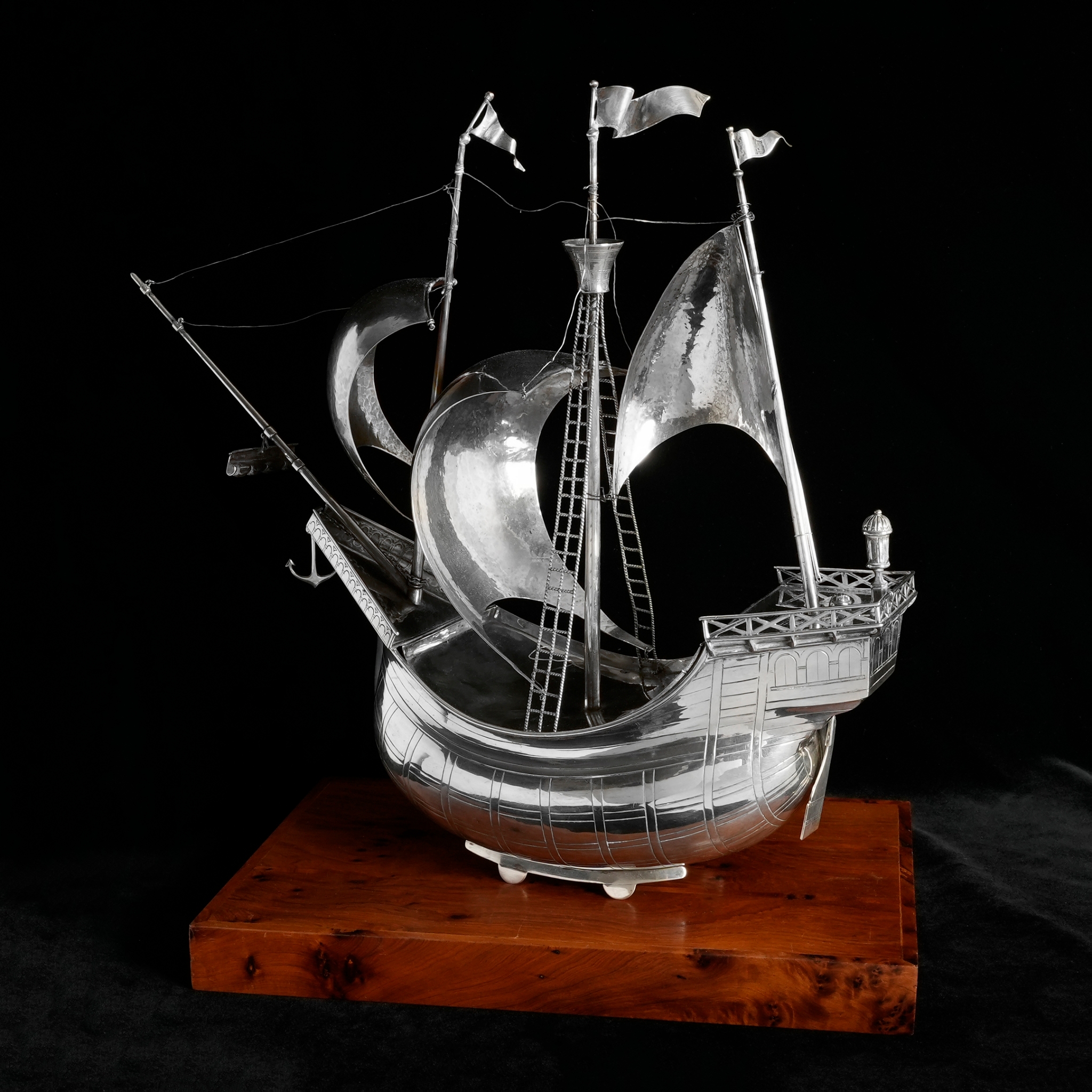描述
Paintings on ivory are generally quite small. They are often called miniatures. However, the term in this context is not referring to size, but comes from the Latin “minium,” the red pigment often used in decorating early manuscripts. (“Miniatures” may also refer to paintings on other support materials such as vellum, paper, metal or porcelain.)
Using ivory as a support for painting miniatures was popular in the 18th century and into the 19th, when photography was invented. The paints most commonly used were water-based (watercolour, tempera, gouache or “bodycolour”), applied directly to the ivory. As a paint support for miniatures, ivory was usually made very thin, making it quite translucent. The thin ivory was often attached to a secondary support made of paper or card. For visual effect, the reverse of the translucent ivory was often painted, or a metal foil inserted between the ivory and its paper or card backing. Miniatures were frequently sealed in intricate metal lockets or cases, which often had glass covers or “crystals”. Sometimes, a lock of woven hair was included inside the casing.
Paintings on ivory are very fragile. The thin and delicate paint surface can easily be rubbed off or soiled by mishandling. If the ivory itself is held by the sides, even slight pressure can cause it to bend or split. If held in the palm of the hand, a thin ivory could react to the skin’s moisture, which could quickly cause the ivory to warp. Removing an ivory from its case should only be carried out in an emergency situation or by a conservation professional, if treatment is required.
Even a very small amount of water on a painted ivory can affect or obliterate brush strokes and image. Water damage can occur if a person simply speaks over an uncovered ivory; if an enclosing case or frame is improperly cleaned; or if condensation forms on the inside of a case or crystal. Residue from a cleaning compound can contribute to the corrosion of a metal case, which will also stain the ivory.
手繪象牙通常尺寸較小,統稱迷你肖像畫但這並非是指尺寸而是直譯於拉丁語Minium,利用一種早期用來封存手稿的紅色染料來作畫(迷你肖像畫也常用來作為畫在牛皮紙,羊皮紙或瓷器上的畫)
利用象牙當作畫的介質是18世紀常用的作法,甚至到19世紀相片發明前都還有人這麼做,這種畫通常是用水彩基底來完成(水彩,蛋彩,膠彩或是脂彩),是直接在象牙上作畫,並且為了方便作畫象牙基底通常會特地做薄,讓他本身可以透光。而這薄型牙片通常會有第二層介質做強化,像是紙或是紙卡。為了視覺效果,通常會將易於反光的牙片背面蓋上紙片或是以金屬錶框。而這樣的肖像畫除了牙片本身往往會另外做成盒子的形式,並且為了保護易受損的象牙表面往往會另外加一個玻璃或水晶面來鑲在外框上,而盒中常會鋪有天鵝絨或絲綢做內裝。
舉例說明
象牙畫由於素材本身往往是非常脆弱的,薄而精緻的表面很容易由於不當處理而造成毀損,牙片如果在握持時對側面用力過度很容易造成變形或斷裂,如果放在手掌上也會由於流汗等水分造成表面的受損,所有收藏此類作品的玩家建議除非是在必要狀況不然不應該把象牙從任何成品中取出以免造成不當的損害,如真要取出那比需要由專家以特定裝備來處理。
任何水分接觸到牙畫表面都會造成筆觸或水彩的脫落,即使是一個人說話造成的飛沫接觸到任何未經玻璃蓋保護的象牙畫,甚至是任何清潔劑成份附著在未蓋緊的盒子或是畫框上,甚至是玻璃或水晶保護蓋上結的霜,最好的處理方式就是不要接觸到任何水分。











